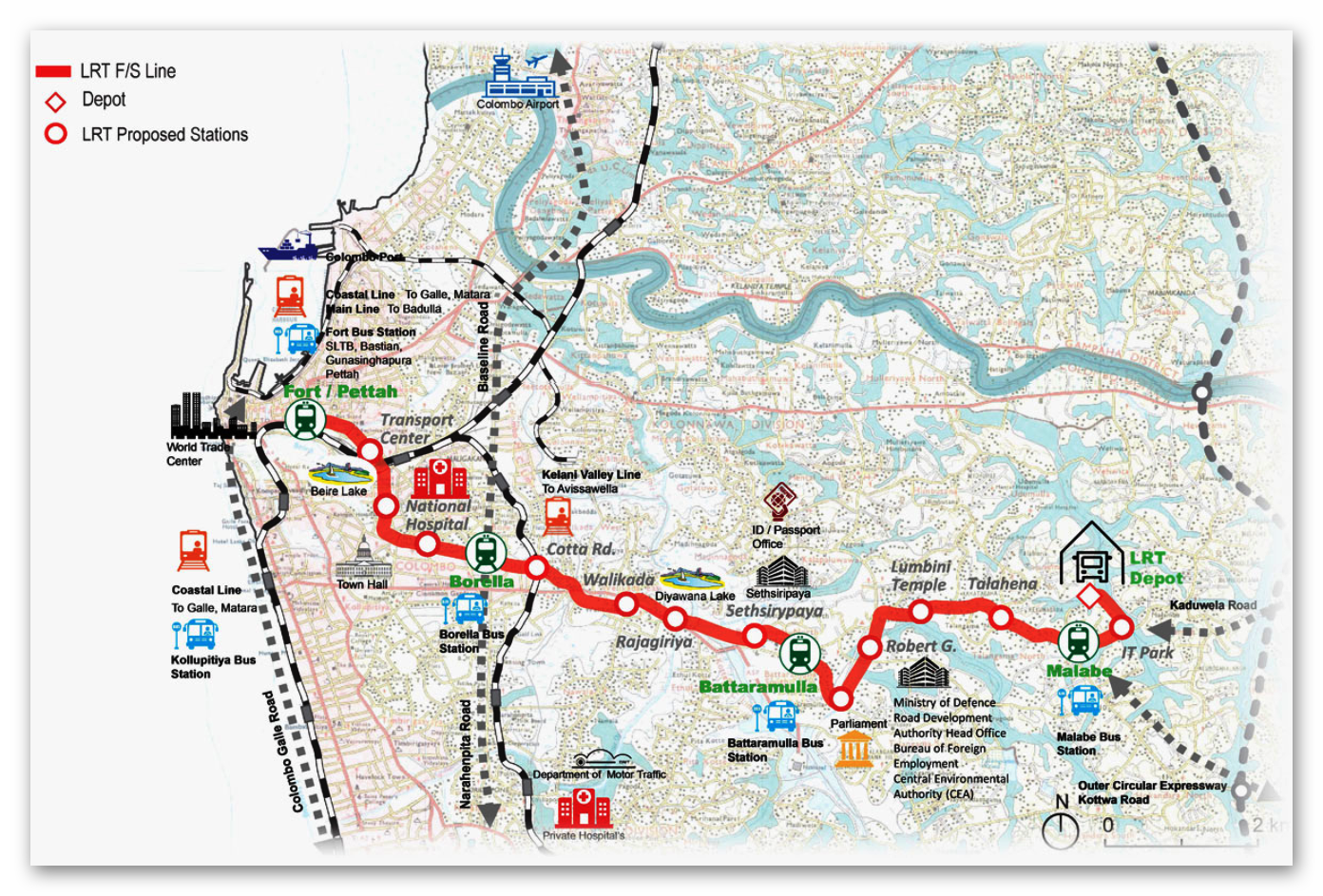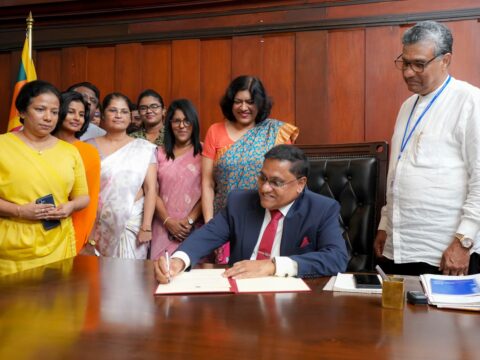COLOMBO: The Colombo Light Rail (CLR), a mega rail transit project, is on track to dramatically transform the transportation system in Sri Lanka.
Details of the world-class rapid transit system were announced at a press conference addressed by Megapolis and Western Development Minister Champika Ranawaka, shortly after he received the feasibility study from Fusato Tanaka, Country Director of Japan International Co-operation Agency (JICA), the governmental agency that coordinates official development assistance for the government of Japan.

As it aims to develop an effective and efficient passenger transport system to ease traffic congestion on roads leading to Colombo from the suburbs, Sri Lanka’s first light rail will reduce the travelling time from Malabe to Fort or Pettah from 90 minutes to 30 minutes.
THE ROUTE

The Japanese government will provide a 1.7 billion US dollar (approximately Rs.272 billion) equivalent yen denominated loan at 0.1 percent interest, The loan will have 40-year repayment term with a 12 year grace period. Officials expect financing for the first phase of this project to be finalised by the end of this year with construction set to begin by 2020 after awarding of contracts for architectural and design plans. Acquisition of lands for the unique transportation project has already commenced.
Light rail is a metropolitan electric railway system which operates single cars or short trains along exclusive right of way at ground level, aerial structures in subways or occasionally on streets and to board and discharge passengers at track or car floor level. The Colombo Light Rail Transit project’s construction is divided into seven phases, with construction of phase 1 to start in 2020. The proposed rail system will be powered solely by electricity and comprises seven light rail transit lines and two high priority lines. The total cost of the project for the seven phases is estimated at around US $ 6 billion.
Minister Champika Ranawaka said his ministry was not only able to obtain this huge funding from the Japanese government on a highly concessionary rate of interest, the Sri Lankan government would be in a position to repay the loan before the stipulated period of 40 years.
“The Light Rail Transit Project will not be a white elephant. It has the capacity to repay the loan in full before the stipulated period, “ the minister said. “This project will be a novel breakthrough in the transport sector after 1860, the year in which railways was first introduced to Sri Lanka.”
THE CORE PROJECT TEAM

Nearly one million people enter the city of Colombo on a day to day basis thus causing severe traffic congestion in and around Colombo. City planners have forecast that by 2035 the number of passengers in the main transport corridors within the Colombo Metropolitan Region would rise from 1.9 million to 4.5 million. Hence, a sustainable solution covering the next two decades was required to tackle the transport problem.
The project will result in huge benefits for the people living and working in Colombo including saved time and fuel, a lower carbon footprint leading to improved air quality and intermodality aimed at achieving a seamless transport experience, factors that will be a boost to economic development and environmental sustainability.




